Crocus Spotted in the Rock Garden!
Posted in Gardens and Collections on February 11 2009, by Plant Talk
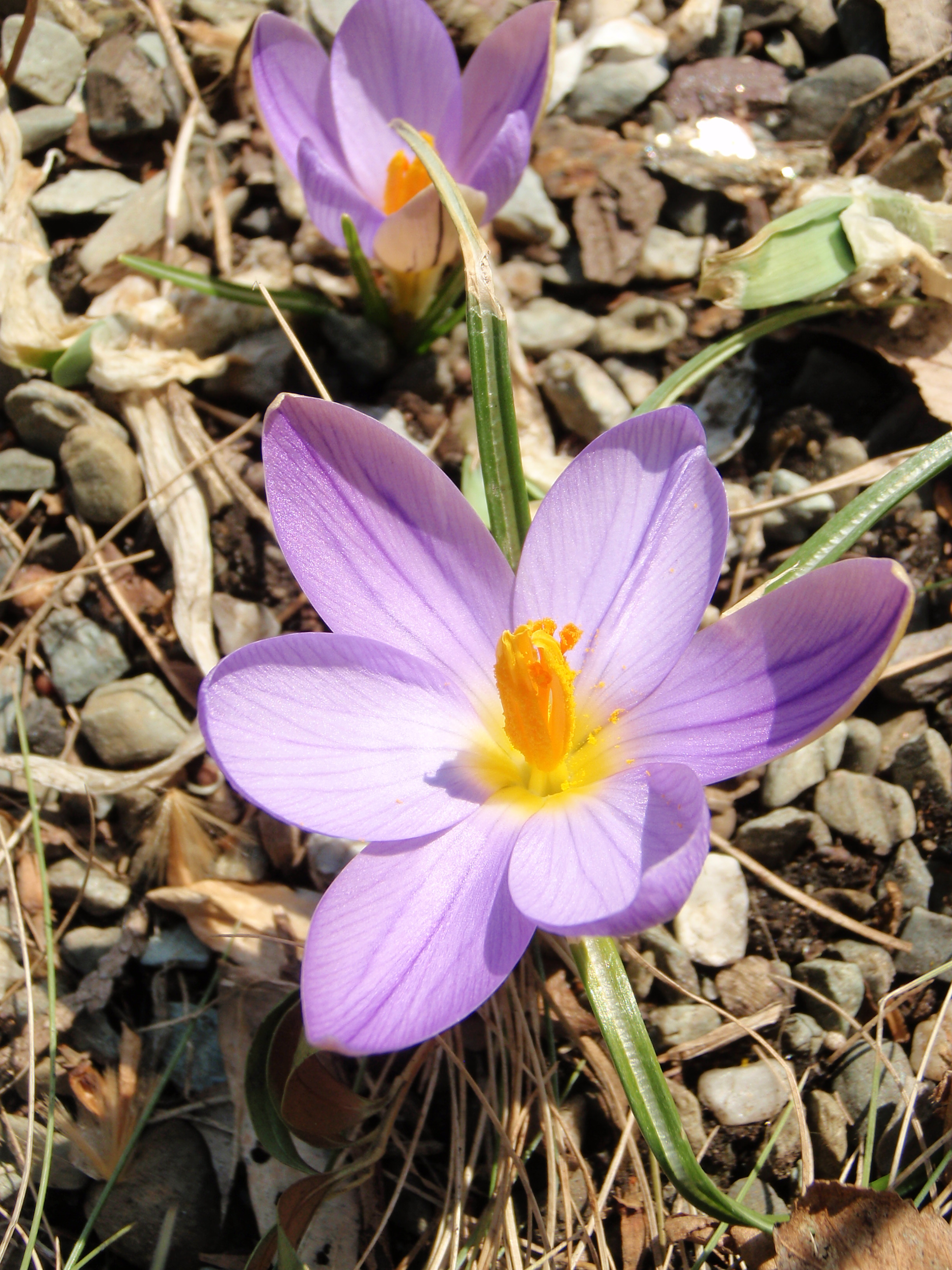
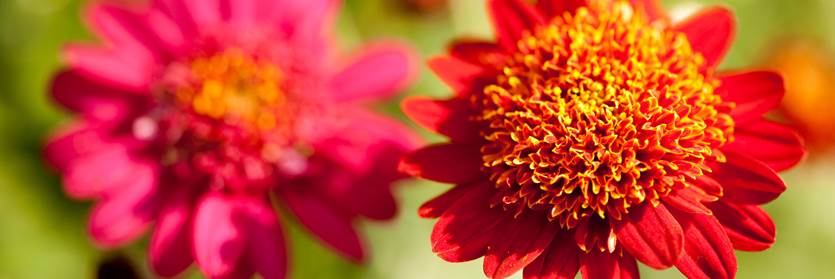
Inside The New York Botanical Garden
Posted in Gardens and Collections on February 11 2009, by Plant Talk

Posted in Gardens and Collections on February 11 2009, by Plant Talk
 |
The Botanical Garden’s living collections is among the greatest in the world and contains more than 1 million plants. Jon Peter, Plant Records Manager, periodically shines the spotlight on a particular species that can be found within our 250 acres. |

Botanical Name: Pinus bungeana
Common Name(s): Lacebark pine; Bunge’s pine
Family Name: Pinaceae (Pine family)
Native Range: Central to northern China
USDA Hardiness Zones: Zone 4–8
 Location(s) within NYBG: By Reflecting Pool, Ross Conifer Arboretum
Location(s) within NYBG: By Reflecting Pool, Ross Conifer Arboretum
Site Requirements: Prefers full sun and is adaptable to many soil types as long as it is well- drained soil.
Interesting Note: A slow-growing pine tree that has many striking features, which help to make this a desirable tree for the home landscape. The best feature is the camouflage bark. which exfoliates with age to create beautiful colors and patterns. This feature is exceptional against a backdrop of freshly fallen snow.
Posted in People on February 10 2009, by Plant Talk
 Sally Armstrong Leone is Editorial Director at The New York Botanical Garden.
Sally Armstrong Leone is Editorial Director at The New York Botanical Garden.
The renowned American philosopher and poet Ralph Waldo Emerson wrote, “…every hour and season yields its tribute of delight” in Nature (1836), his statement of the sublimity of our seasons.
These words have instructed and inspired photographer Lawrence Lederman, a member of the Botanical Garden’s Board of Advisors who has spent the past seven years capturing the beauty and diversity of the Garden throughout the seasons. “By now I know the places to look for change, but there are always delightful surprises.” His poetic images reveal the intricacy of the way light works within a garden or landscape. “Spring is sensual,” he notes, but there is year-round interest that keeps him coming back, such as the brilliance of fall color or the silhouettes after a snowfall.
Lederman, a Brooklyn native, was educated in the New York City public schools. After Stuyvesant High School, he attended Brooklyn College. He studied law at New York University School of Law where he was an editor of the Law Review. To round out his education, he spent one year in San Francisco as the law clerk for the Chief Justice of the California Supreme Court before returning to live and practice law in New York. Currently of counsel in the New York office of Milbank, Tweed, Hadley & McCloy LLP, he is a Distinguished Adjunct Professor at New York Law School. He is also the author of Tombstones: A Lawyer’s Tales from the Takeover Decades (1992), an account of his days as one of the most active corporate and mergers and acquisitions lawyers in the country.
Lederman and his wife, interior designer Kitty Hawks, divide their time between New York City and Westchester County. It was at the latter in about 2001 where he developed his interest in photography and pursued this avocation avidly. Fascinated by the shadows in his own backyard, he experimented endlessly with shape and form. He discovered that in the right light, trees took on the shapes of animals; trying to capture them became a game, which trained him to use his camera. In 2003 the Botanical Garden published his first calendar, Woodland Creatures, which led to his annual series, Trees. In May 2008 Lederman was a Visiting Artist at the American Academy in Rome, where among other subjects, he photographed the Academy’s gardens and the Roman Campagna.
Over the years, Lederman’s cameras and accessories have changed with the times. He is self taught. “I went high tech,” he comments, “because I’m not capable of being low tech, not adept at working with chemicals in a darkroom.”
 |
 |
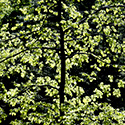 |
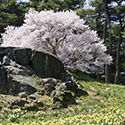 |
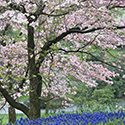 |
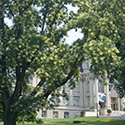 |
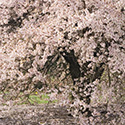 |
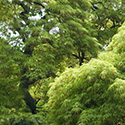 |
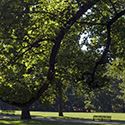 |
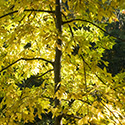 |
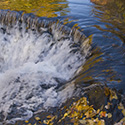 |
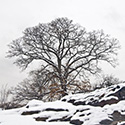 |
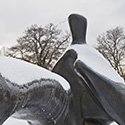 |
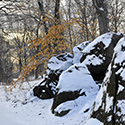 |
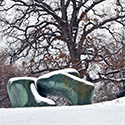 |
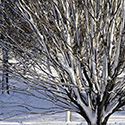 |
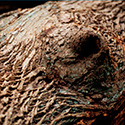 |
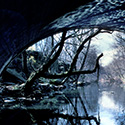 |
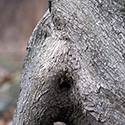 |
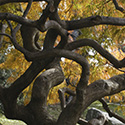 |
Photos © Lawrence Lederman, All Rights Reserved
Posted in Learning Experiences, Programs and Events on February 6 2009, by Plant Talk
Much to Do Here, Even at this Time of Year—Surprised?
 Carol Capobianco is Editorial Content Manager at The New York Botanical Garden.
Carol Capobianco is Editorial Content Manager at The New York Botanical Garden.
 Yes, it’s below freezing outside. Yes, most plants are dormant and bedded under a blanket of snow. Yes, it’s a great time to come to The New York Botanical Garden with fresh eyes to take in the standing and specialty exhibits you haven’t yet seen.
Yes, it’s below freezing outside. Yes, most plants are dormant and bedded under a blanket of snow. Yes, it’s a great time to come to The New York Botanical Garden with fresh eyes to take in the standing and specialty exhibits you haven’t yet seen.
Surprise your friends, kids, or lover by suggesting a day at the Garden in winter. It may seem a little offbeat, but what a treat it can be, because there is so much to do here.
For the bold: Enjoy the cold, crisp air with a guided tour of the Forest or a Saturday morning walk to identify birds with an expert. Or stroll on your own.
For the snuggly set: Don’t like the cold? Warm up inside the glasshouse galleries of the Enid A. Haupt Conservatory for an ecotour around the globe in A World of Plants. Use the self-guided audio tour, or experience the exhibit with a docent tour. Later, stop at one of the Garden’s Cafes for soup, lunch, and hot beverages, and duck into Shop in the Garden to select a needed gift or a good gardening book to cozy up with.
For the procrastinators and the “let’s do it again” folks: Whether you still haven’t seen Moore in America or want to see it again in a different season, these are the final days of the largest outdoor exhibit of sculptor Henry Moore’s works ever presented in a single venue in America.
For the curious: Discover what the Botanical Garden’s scientists are researching and understanding worldwide in the ongoing exhibit Plants and Fungi: Ten Current Research Stories. In fact, Garden scientist Dr. Amy Litt will be giving a talk in the gallery on Saturday, February 7, at 1 p.m.
For the home gardener: Each weekend Sonia Uyterhoeven, Gardener for Public Education, gives informative presentations and demonstrations on home gardening topics.
For the family: Get hands-on with fun activities that explore the fascinating life and accomplishments of the man who helped peanut, soybean, and sweet potato farmers in The Life and Work of George Washington Carver.
For the browser: Spend time perusing the world-renowned collection of botanical books in the LuEsther T. Mertz Library. You will want to visit again and again—the Library holds more than 1 million items spanning 10 centuries.
For the photography enthusiast: View the vibrant color portraits of heirloom tomatoes by Victor Schrager on exhibit—a sampling of the amazing 500 varieties grown every year in the garden of acclaimed food writer Amy Goldman—in The Heirloom Tomato. Bring your camera and take your own fantastic images of the shapes of trees, the Garden’s snow-covered landscape, and the tropical plants in the Conservatory (and share them with us on Flickr).
For the lifelong learner: Cultivate yourself by attending one of the many course offerings of the Continuing Education department. In fact, you can start by signing up for the Special Saturday, all about shade gardening, to be held tomorrow, February 7.
Check out Saturday’s programming.
Check out Sunday’s programming.
Posted in Learning Experiences, People on February 5 2009, by Plant Talk
 |
Jan Johnsen is an instructor of landscape design in the Garden’s Continuing Education program and a past recipient of the Instructor of the Year award. She is a principal of the firm Johnsen Landscapes & Pools. |
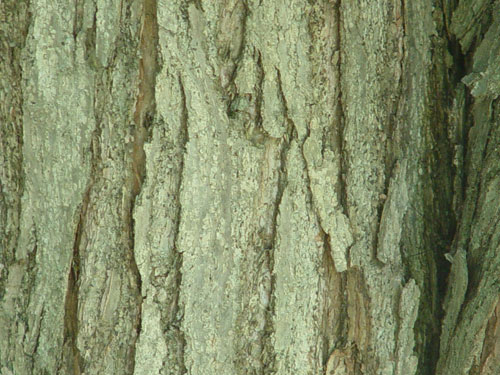 Trees, Earth’s largest and longest-lived plant forms, are Nature’s gift to us. They provide for our sustenance—giving us fire, fruit, shade, shelter, medicine, and soil enrichment—and they beautify our environment. Fittingly, trees hold a lofty position in many cultural traditions, symbolizing qualities such as wisdom, fertility, courage, or strength. And the prominence of trees in folkloric and religious practices reminds us of the many blessing they bestow. For some people trees offer solace, for others they represent ongoing life, and for others they enlarge the definition of “community.”
Trees, Earth’s largest and longest-lived plant forms, are Nature’s gift to us. They provide for our sustenance—giving us fire, fruit, shade, shelter, medicine, and soil enrichment—and they beautify our environment. Fittingly, trees hold a lofty position in many cultural traditions, symbolizing qualities such as wisdom, fertility, courage, or strength. And the prominence of trees in folkloric and religious practices reminds us of the many blessing they bestow. For some people trees offer solace, for others they represent ongoing life, and for others they enlarge the definition of “community.”
Wendell Berry, novelist and essayist, sees trees from this last perspective. “You’ve got to understand what kind of creature a tree is…they have to receive from us certain deference, a certain respect, as we would extend to any neighbor.”
When trees are seen as our neighbors, commingling in everyday life, they become a part of our family, standing as silent sentinels, growing amid—and despite—the tumult of human activity. It is the idea of a tree as ally and protective presence that stirs my imagination and compels me to “talk to the trees.”
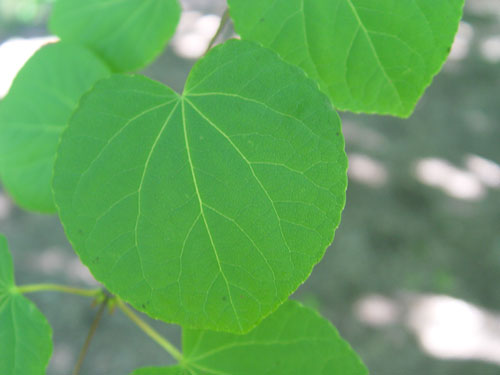 In my visits to The New York Botanical Garden I often silently talk to the trees. I have special trees that I go to again and again. One of my favorites is the grand Katsura tree (Cercidiphyllum japonicum) that is standing on the right side of the Library building. At any time of year I can walk beneath its spreading boughs and feel a sense of lightness envelop me. The peace and serenity that permeates the atmosphere is palpable. It is as Eckhart Tolle writes in his book Stillness Speaks: “When you look at a tree and perceive its stillness, you become still yourself.” In my case, it is more than looking, it is a true communion.
In my visits to The New York Botanical Garden I often silently talk to the trees. I have special trees that I go to again and again. One of my favorites is the grand Katsura tree (Cercidiphyllum japonicum) that is standing on the right side of the Library building. At any time of year I can walk beneath its spreading boughs and feel a sense of lightness envelop me. The peace and serenity that permeates the atmosphere is palpable. It is as Eckhart Tolle writes in his book Stillness Speaks: “When you look at a tree and perceive its stillness, you become still yourself.” In my case, it is more than looking, it is a true communion.
Posted in Color Report, Gardens and Collections, Video on February 4 2009, by Plant Talk
 |
Rustin Dwyer is Visual Media Production Specialist at The New York Botanical Garden. |
Color Report With Jon Peter — Winter Bark Edition from The New York Botanical Garden on Vimeo.
With winter all around us NYBG Plant Records Manager Jon Peter takes a look at some of the interesting bark around the Garden’s 250-acre spread.
For a monthly schedule of what’s in color at NYBG, visit nybg.org/whats_in_flower/
For periodic updates of what’s in bloom, call 718.362.9561 and enter 403#.
Posted in Gardens and Collections, Learning Experiences, Programs and Events on January 30 2009, by Plant Talk
Tour Guide-led Walks Enlighten Visitors
 |
Samantha Buck is an Interpretation Intern for Public Education. |
 Recently, I took a Forest Tour with the very knowledgeable Garden Tour Guide Ken Lloyd. For those of you who don’t know what a Garden Tour Guide is, as I didn’t, they are expertly trained volunteers who are essential to the Garden’s success.
Recently, I took a Forest Tour with the very knowledgeable Garden Tour Guide Ken Lloyd. For those of you who don’t know what a Garden Tour Guide is, as I didn’t, they are expertly trained volunteers who are essential to the Garden’s success.
It was a nippy day to say the least, especially since I was unprepared for the tour and as such hadn’t dressed in layers as I normally would have had I known (I take pride in my preparedness being a Mainer born and raised). So off I went with Ken in my dress pants and sneakers, braving the chilly air and our runny noses to explore some of the trees in the Garden.
Our first stop was at the umbrella pines that, as Ken pointed out, were planted in the very early 1900s. Their red-colored bark and multi-stemmed trunks made them a unique stop on our adventure. Just past the Everett Children’s Adventure Garden, we stopped at the Chinese elms along the road. Ken explained how Dutch elm disease, an introduced fungus, had decimated the American elm population. He also stated that there are some elm species that can be treated for the disease and others that are resistant to it.
On entering the Forest, I felt I was in the most peaceful place in the city. The Forest is kept as natural as possible—there is no snow removal from the paths, no native trees are cut, and life is allowed to take its course. However, invasive species that encroach the area are removed and fires that start are put out. None of the descriptive signs I encountered elsewhere on the Garden grounds were present in the Forest, but Ken was able to discern the species from their bark or the form of the tree itself, by the way the branches grow and the shape of their buds. The only signs present were placed only on a few trees in order to track changes that occur over time. Volunteers record these changes once a month.
I also learned the reason why the trees aren’t any bigger or older in the Forest, despite the lack of human involvement. During the last Ice Age, a fair bit of the soil was removed by glaciers and deposited into the ocean. As a result of this shallow soil, it is difficult for the trees to establish a good root system that would allow them to reach monstrous heights.
I highly recommend taking one of The New York Botanical Garden’s many Tour Guide-led tours—it was definitely one of the highlights of my internship here. I learned a substantial amount despite my damp, cold feet. Just be sure to dress appropriately for the weather so you’re able to immerse yourself completely in the experience.
A guided Forest Tour will be held on Saturday, January 31, at 12:30 p.m. Meet at the Reflecting Pool in the Leon Levy Visitor Center.
Check out Saturday’s programming.
Check out Sunday’s programming.
Posted in NYBG in the News, People on January 29 2009, by Plant Talk
Last in a 3-Part Series
 |
Todd Forrest is Vice President for Horticulture and Living Collections. |
 A majestic red oak grows alongside a trail in the 50-acre old-growth Forest at the heart of The New York Botanical Garden. In the mid-1980s, scientists determined that this tree was nearly 250 years old. It sprouted from an acorn before the Revolutionary War and grew to maturity as New York blossomed from a colonial outpost into the greatest city in the world.
A majestic red oak grows alongside a trail in the 50-acre old-growth Forest at the heart of The New York Botanical Garden. In the mid-1980s, scientists determined that this tree was nearly 250 years old. It sprouted from an acorn before the Revolutionary War and grew to maturity as New York blossomed from a colonial outpost into the greatest city in the world.
Every time I pass this oak I am reminded of the passion, vision, and dedication to adding something wonderful to our city and our country that drove our predecessors to create The New York Botanical Garden in 1891. I am reminded that they chose this site in 1895 because of the unparalleled beauty of its natural landscape and then preserved this landscape as the surrounding city grew and grew. I am reminded of the countless people who have come to the Garden to learn about plants: their beauty, their natural history, their planting and care, their genomes. I am reminded of my responsibility to keep the Garden’s plants and landscape healthy, diverse, and beautiful so that others today and in the future will have the opportunity to make the sustaining connection to nature that has been such a gift to me.
Botanical gardens are where art, nature, and science come together. They are where artists and gardeners come for inspiration, where students and teachers come to experience and better understand the beauty and complexity of nature, and where scientists come to work on solving nature’s most vexing mysteries. Botanical gardens matter now more than ever.
Send a letter of support to state government leaders and forward the Save the Planet widget (at right) to your friends so that they, too, can help.
Hear from the Garden’s own Fran Coelho and Jeff Downing as they explain in their own words just why botanical gardens matter.
Posted in NYBG in the News, People on January 28 2009, by Plant Talk
Second in a 3-Part Series
When a growing community of researchers, educators, and concerned parents all lament the increasing distance between children and nature, and the negative consequences for children’s health, education, and environmental understanding… At a time when technology offers a synthesized, digitized alternative to actual physical activity, reinforcing sedentary habits and increasing the incidence of childhood obesity and a host of related health issues… In an era when American competitiveness is questioned and our ability to stimulate students’ interest in the scientific fields that will foster the engines of future economic growth lags other countries… As more and more Americans become engaged in the discussion about the world’s food supply—where does it come from, what’s in it, is it safe, and can I do more to grow some portion of it at home?… And when many jobs in horticulture and related fields go wanting for applicants at a time when millions of Americans are looking for new career paths that might provide rewarding careers, while at the same time helping in some small way to reduce the impacts of these pressing national and global issues… …Botanical gardens matter. Education is fundamental to the core mission of botanical gardens. At The New York Botanical Garden, education programs reach students from pre-K to post-grad and are designed to develop environmental awareness, to assist in improving science education in schools, and to prepare students for their own “Green Careers” in horticulture-related professions. Annually, 75,000 schoolchildren, many from the Bronx, visit the Garden to learn about plant science, gardening, and the rich ecology of our local forests, rivers, and wetlands. Who wants to tell those schoolchildren to stay inside? Send a letter of support to state government leaders and forward the Save the Planet widget (at right) to your friends so that they, too, can help. Hear from the Garden’s own Fran Coelho and Jeff Downing as they explain in their own words just why botanical gardens matter. |
Posted in NYBG in the News, People, Science on January 27 2009, by Plant Talk
First in a 3-Part Series
| Living museums such as The New York Botanical Garden face a 55 percent cut in New York State funding this fiscal year, and the budget for zoos, botanical gardens, and aquaria may be completely eliminated in the next fiscal year. If Governor Paterson’s proposal is passed by the New York State Legislature, it will destroy a program that has provided consistent and steadily increasing support for the Garden for over 30 years.New York Times reporter Andrew Revkin recently blogged about the situation on Dot Earth. In response, the Garden’s Vice Presidents for Science, Education, and Horticulture each posted comments to the blog regarding why botanical gardens matter.
Their insightful remarks are so moving that we are presenting them here in Plant Talk in a three-part series beginning today. We hope their stories will inspire you to comment, to send a letter of support to state government leaders, and to forward the Save the Planet widget to your friends so that they, too, can help.
As the current world population approaches 7 billion, an ever-increasing percentage of children are growing up in urban environments where contact with nature is more difficult, certainly less frequent, and as development continues, the places where one can experience natural environments become fewer and fewer. I fear that more people today do not have the regular contact that allowed me to develop an affection for nature, which guides my fervent desire to preserve it so that future generations can appreciate the wonder of the plants and animals that share our planet. In this light, I feel that botanical gardens can provide us with the opportunity to see and learn about plants and experience the spectacular diversity that they present. Just as we can learn about animals at a zoo, we can learn to care about plants at botanical gardens and appreciate their importance to us as food, medicines, other materials, and understand that they define the environment in which all terrestrial life exists. Our only hope for preserving the amazing biological diversity on Earth is the opportunity to learn enough about plants in botanical gardens and elsewhere so that future generations care enough to make their continued protection and sustainable use a priority. Hear from the Garden’s own Fran Coelho and Jeff Downing as they explain in their own words just why botanical gardens matter. |